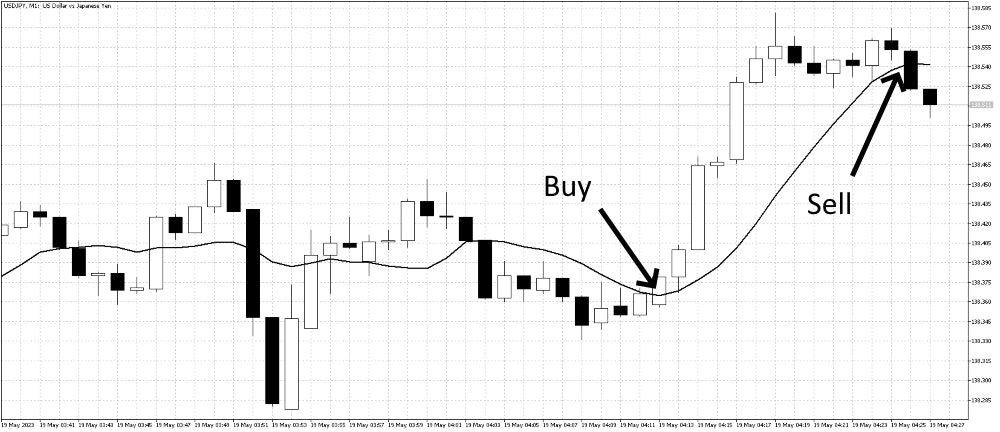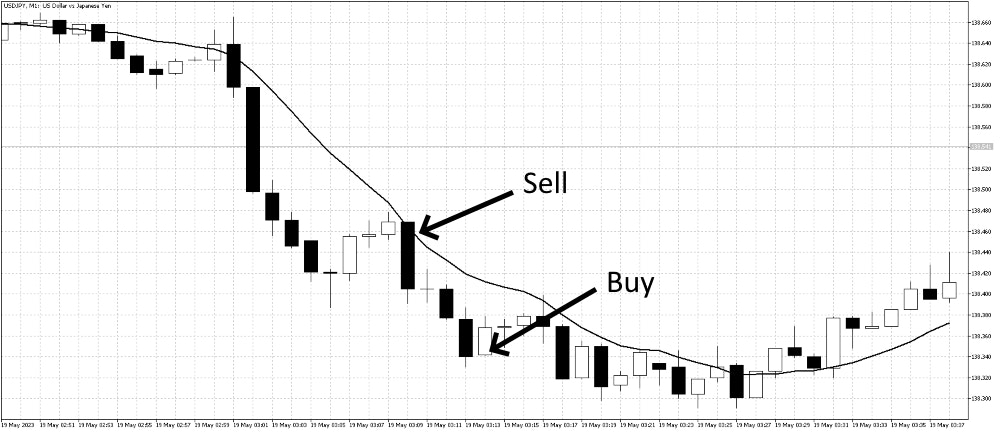Nick Goold
Forex prices fluctuate rapidly during high volatility, creating potential profit-making situations for astute traders. One valuable tool that can aid in capitalizing on these opportunities is the 1-minute chart. This article will explore the benefits of using a 1-minute chart when forex volatility is high, discuss effective strategies, and highlight important considerations for traders.
Understanding High Forex Volatility
Volatility in the forex market refers to the degree of price fluctuation within a given period. High volatility indicates larger price movements, which can be driven by various factors such as economic releases, geopolitical events, or market sentiment. While high volatility can increase the profit potential, it also amplifies risk, making it crucial for traders to understand market dynamics and employ appropriate strategies.

Benefits of the 1-Minute Chart in High Volatility
Enhanced Trade Timing: Traders can capitalize on short-term price swings and exploit quick profit opportunities during heightened volatility. For example, using a moving average on a 1-minute chart will result in earlier entries than a 5-minute chart. In addition, when volatility is high, the 1-minute chart will allow traders to find trend and reversal trading opportunities quicker than longer-term charts.
Scalping Opportunities: High volatility often leads to short-term price fluctuations, creating ideal conditions for scalping strategies. Scalpers aim to take advantage of small price movements and execute numerous trades within a short timeframe. The 1-minute chart is well-suited for scalping strategy, enabling traders to spot rapid price changes and execute trades promptly.
Increased Trading Frequency: In high-volatility markets, the frequency of trading opportunities tends to rise. The 1-minute chart allows traders to actively engage with the market and participate in multiple trades throughout the day. This increased trading frequency can increase profit potential for traders who capitalize on short-term price movements.
Effective Strategies for Trading the 1-Minute Chart in High Volatility:
Breakout Trading: Breakout strategies aim to capture significant price movements when the price breaks above or below key levels of support or resistance. Breakouts are more likely to occur in high volatility, and the 1-minute chart provides a precise timeframe to identify and trade these breakouts. Traders can set entry orders slightly above or below these levels and capitalize on the momentum generated by the breakout.
Trend-Following: While high volatility can create sharp price movements, trends can still emerge. Traders can use the 1-minute chart to identify short-term trends and ride the momentum. By combining trend-following indicators, such as moving averages or trendlines, with the 1-minute chart, traders can identify potential entry and exit points within the trend. When volatility is high, there will be more opportunities to follow the trend with a 1-minute chart than longer-term charts.

Quick Scalping: Scalping involves executing multiple trades in a short period, aiming to profit from small price fluctuations. The 1-minute chart is particularly suited for scalping strategies, as it allows traders to identify short-term price patterns and execute trades swiftly. In addition, scalpers often employ technical indicators, such as oscillators or volume indicators, to generate trade signals and manage risk effectively.
Considerations for Trading the 1-Minute Chart in High Volatility:
Risk Management: High volatility comes with increased risk, and traders must implement robust risk management strategies when trading the 1-minute chart in such conditions. Setting appropriate stop-loss orders and position sizes is essential to protect against sudden price reversals. Traders should also be mindful of the potential for slippage and ensure access to reliable execution platforms that handle fast-paced trading.
Adequate Market Understanding: Trading on the 1-minute chart requires a deep understanding of market dynamics and price patterns. Traders should be familiar with the underlying factors driving volatility, such as economic events or news releases, and their potential impact on currency pairs. Keeping an eye on market sentiment and being aware of upcoming events or announcements can help traders anticipate potential volatility spikes. Understanding when the market is too quiet to use a 1-minute chart effectively will help you achieve consistent profitability.
Monitoring Multiple Timeframes: While the 1-minute chart provides valuable insights into short-term price movements, it is also crucial to consider the broader market context by monitoring higher timeframes. Higher timeframes, such as the 5-minute or 1-hour charts, can provide a clearer picture of the overall trend and help traders make more informed trading decisions.
Avoiding Overtrading: Given the fast-paced nature of the 1-minute chart, there is a risk of overtrading. Therefore, traders must exercise discipline and patience, focusing on high-probability setups and avoiding impulsive trades. Maintaining a trading plan and sticking to predefined entry and exit criteria is crucial, rather than succumbing to emotions or chasing every price movement.
Continuous Learning and Adaptation: Trading the 1-minute chart requires constant learning and adaptation. Traders should evaluate their trades, analyze patterns, and identify areas for improvement. Keeping a trading journal can be immensely helpful in reviewing and refining strategies. It is also important to stay updated on market developments, refine technical analysis skills, and explore new tools and indicators to enhance trading performance.
Conclusion
The 1-minute chart can be a valuable tool for traders during periods of high forex volatility. It offers real-time price action, enhanced trade timing, and opportunities for scalping strategies. Traders can profit from short-term price movements by employing effective trading strategies, such as breakout trading, trend-following, and scalping. However, it is crucial to exercise caution and implement sound risk management techniques to navigate the inherent challenges of high volatility.
Trading the 1-minute chart requires discipline, continuous learning, and adaptation to evolving market conditions. Traders must deeply understand market dynamics, employ proper risk management strategies, and avoid overtrading. By combining technical analysis, market knowledge, and prudent decision-making, traders can leverage the power of the 1-minute chart to capitalize on short-term trading opportunities and potentially enhance their profitability in high-volatility environments.

